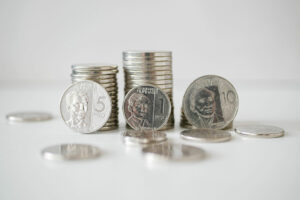Peso may move sideways after guarded Federal Reserve signals
THE PESO is expected to move sideways against the dollar this week after US Federal Reserve Chairman Jerome H. Powell said there was no need to rush the US central bank’s easing cycle. “The dollar-peso closed lower following Powell’s comments on the recent performance of the US economy, giving the Fed room to lower interest […]

THE PESO is expected to move sideways against the dollar this week after US Federal Reserve Chairman Jerome H. Powell said there was no need to rush the US central bank’s easing cycle.
“The dollar-peso closed lower following Powell’s comments on the recent performance of the US economy, giving the Fed room to lower interest rates cautiously,” a trader said by phone.
The peso closed at P58.732 a dollar on Friday, strengthening by 4.5 centavos from its P58.777 finish on Tuesday, according to data posted by the Bankers Association of the Philippines on its website. Week on week it weakened by 47.2 centavos.
The Federal Reserve does not need to rush to lower interest rates given a strong US economy, a solid job market and inflation above its 2% target, Mr. Powell said on Thursday in remarks that could point to borrowing costs remaining higher for longer, according to Reuters.
He said he and his fellow policy makers considered inflation to be “on a sustainable path to 2%” that would allow the Fed to move monetary policy to a more neutral setting without slowing the economy.
The US central bank’s next policy meeting is scheduled for Dec. 17-18.
Faster October US producer price index (PPI) also resulted in a generally weaker dollar on Friday, Michael L. Ricafort, chief economist at Rizal Commercial Banking Corp., said in a Viber message.
US producer prices picked up in October, lifted by higher costs for services such as portfolio management and airline fares, another sign that progress toward lower inflation was stalling, Reuters reported.
The PPI for final demand rose 0.2% last month after a 0.1% gain in September, the Labor department’s Bureau of Labor Statistics said. The increase in the PPI was in line with economists’ expectations. The PPI was reported to have been unchanged in September.
In the 12 months through October, the PPI increased 2.4% after advancing 1.9% in September.
The trader expects the market this week to look for further signals on the Fed’s December policy meeting.
The foreign exchange market will also await US President-elect Donald J. Trump’s trade policies and appointment of his officials, the trader added.
The trader expects the peso to move from P58.50 to P58.95 a dollar this week, while Mr. Ricafort expects it to range from P58.40 to P58.90. — Aaron Michael C. Sy
















